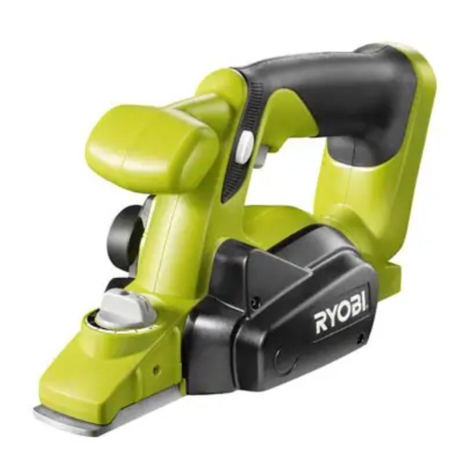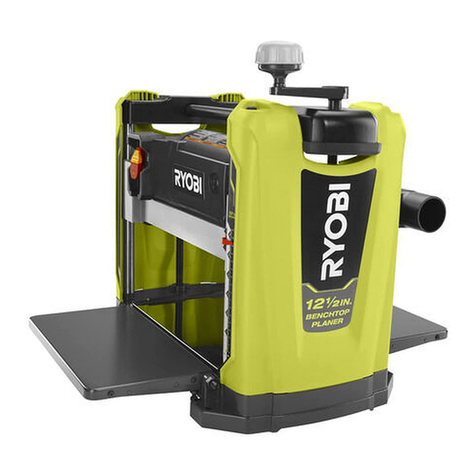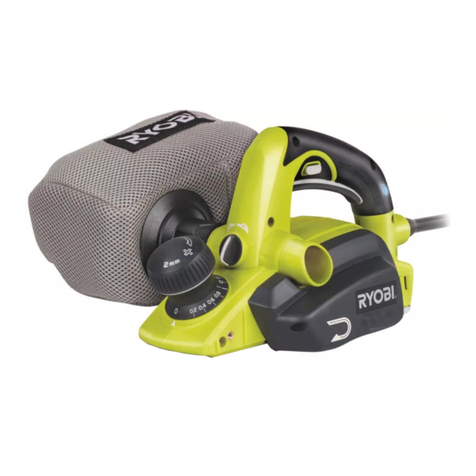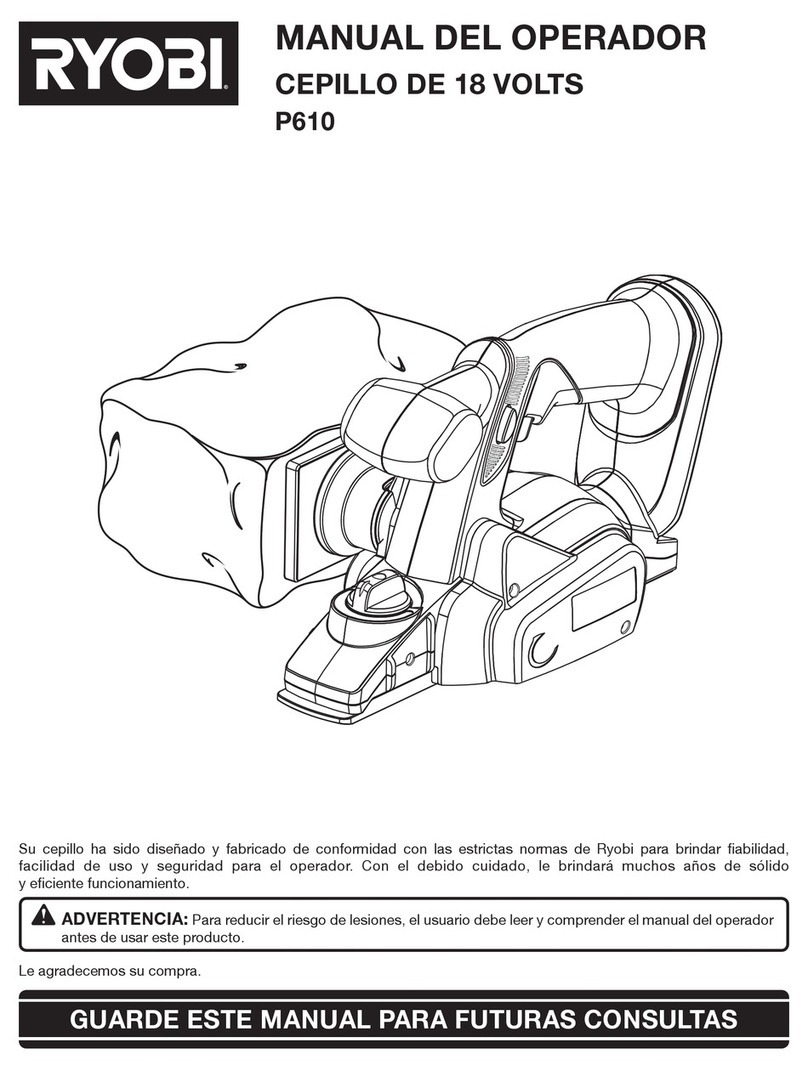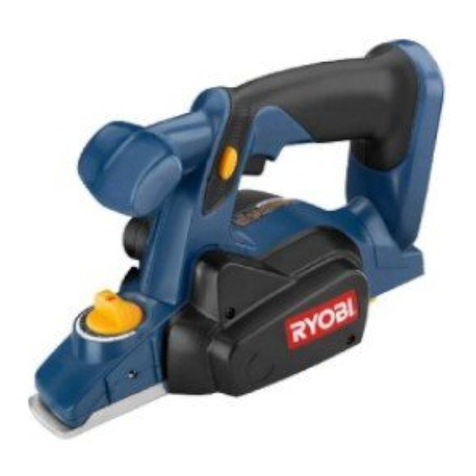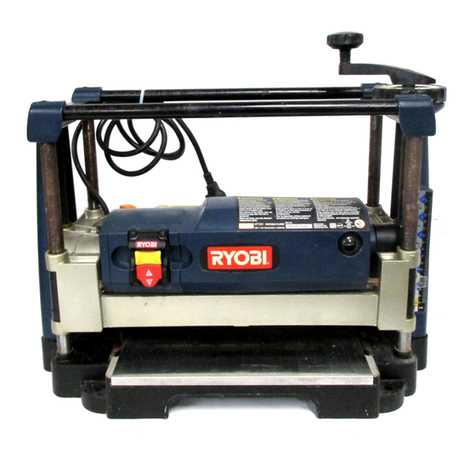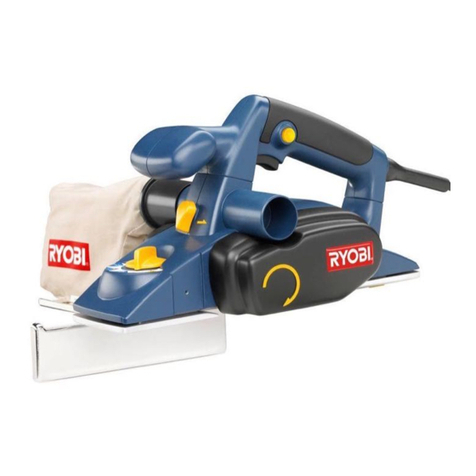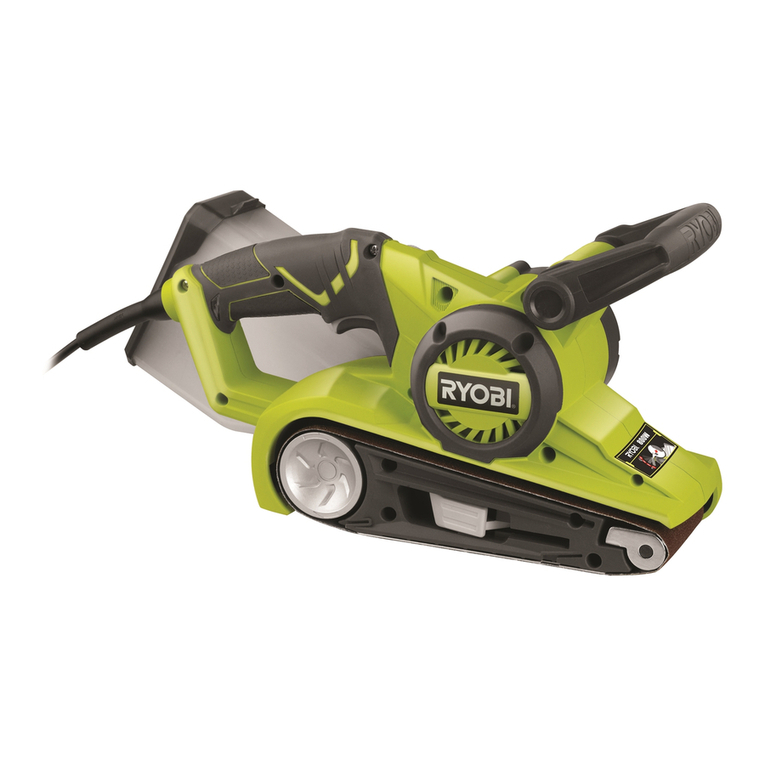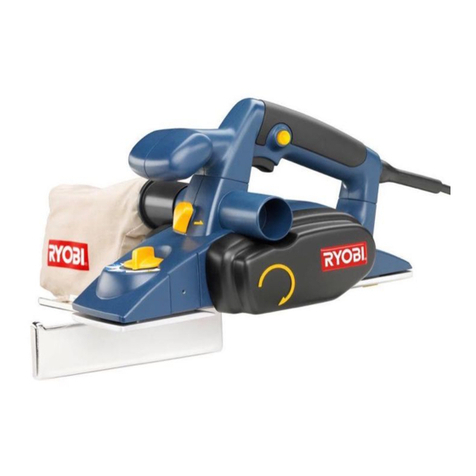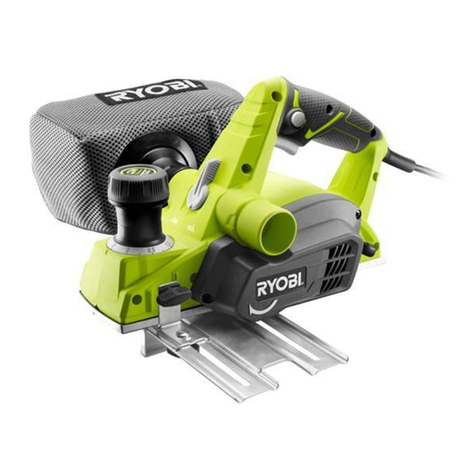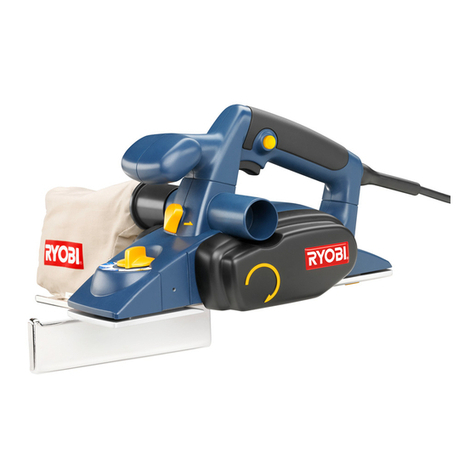
2
Power tools are dangerous in the hands of untrained
users.
ŶMaintain power tools and accessories. Check for
misalignment or binding of moving parts, breakage
of parts and any other condition that may affect the
power tool’s operation. If damaged, have the power
tool repaired before use. Many accidents are caused
by poorly maintained power tools.
ŶKeep cutting tools sharp and clean. Properly
maintained cutting tools with sharp cutting edges are
less likely to bind and are easier to control.
ŶUse the power tool, accessories and tool bits etc.
in accordance with these instructions, taking into
account the working conditions and the work to
be performed. Use of the power tool for operations
different from those intended could result in a
hazardous situation.
ŶKeep handles and grasping surfaces dry, clean
and free from oil and grease. Slippery handles and
grasping surfaces do not allow for safe handling and
control of the tool in unexpected situations.
BATTERY TOOL USE AND CARE
ŶRecharge only with the charger specified by the
manufacturer. A charger that is suitable for one type
of battery pack may create a risk of fire when used with
another battery pack.
ŶUse power tools only with specifically designated
battery packs. Use of any other battery packs may
create a risk of injury and fire.
ŶWhen battery pack is not in use, keep it away from
other metal objects, like paper clips, coins, keys,
nails, screws or other small metal objects, that can
make a connection from one terminal to another.
Shorting the battery terminals together may cause
burns or a fire.
ŶUnder abusive conditions, liquid may be ejected
from the battery; avoid contact. If contact
accidentally occurs, flush with water. If liquid
contacts eyes, additionally seek medical help.
Liquid ejected from the battery may cause irritation or
burns.
ŶDo not use a battery pack or tool that is damaged or
modified. Damaged or modified batteries may exhibit
unpredictable behaviour resulting in fire, explosion or
risk of injury.
ŶDo not expose a battery pack or tool to fire
or excessive temperature. Exposure to fire or
temperature above 130°C may cause explosion.
ŶFollow all charging instructions and do not charge
the battery pack or tool outside the temperature
range specified in the instructions. Charging
improperly or at temperatures outside the specified
range may damage the battery and increase the risk
of fire.
SERVICE
ŶHave your power tool serviced by a qualified repair
person using only identical replacement parts.
This will ensure that the safety of the power tool is
maintained.
ŶNever service damaged battery packs. Service
of battery packs should only be performed by the
manufacturer or authorized service providers.
PLANER SAFETY WARNINGS
ŶWait for the cutter to stop before setting the tool
down. An exposed rotating cutter may engage the
surface, leading to possible loss of control and serious
injury.
ŶUse clamps or another practical way to secure and
support the workpiece to a stable platform. Holding
the work by your hand or against the body leaves it
unstable and may lead to loss of control.
ADDITIONAL SAFETY RULES
ŶAlways wear safety glasses with side shields.
Everyday glasses have only impact resistant lenses.
They are not safety glasses. Following this rule will
reduce the risk of eye injury.
ŶProtect your lungs. Wear a face or duct mask if the
operation is dusty. Following this rule will reduce the
risk of serious personal injury.
ŶProtect your hearing. Wear hearing protection
during extended periods of operation. Following this
rule will reduce the risk of serious personal injury.
ŶBattery tools do not have to be plugged into an
electrical outlet; therefore, they are always in
operating condition. Be aware of possible hazards
when not using your battery tool or when changing
accessories. Following this rule will reduce the risk of
electric shock, fire or serious personal injury.
ŶDo not place battery tools or their batteries near
fire or heat. This will reduce the risk of explosion and
possibly injury.
ŶHold the tool by insulated gripping surfaces only.
Cutting a “live” wire may make the exposed metal parts
of the tool “live” and could give the operator an electric
shock.
ŶEnsure the blade is installed correctly. Tighten the
blade locking screws securely before use. (tightening
WRUTXH1P
ŶThe dust produced when using this tool may be harmful
to health. Do not inhale the dust. Use a dust absorption
system and wear a suitable dust protection mask.
Remove deposited dust thoroughly, e.g., with a vacuum
cleaner.
ŶDo not remove splinters or saw dust while tool is
running.
ŶOnly plane with sharp blades, avoid metals (nails,
VFUHZV&KHFNWKHZRUNSLHFHEHIRUHSODQLQJ
ŶDo not reach into the danger area of the tool when
plugged in.
ŶPlace the front plate of the machine on to the workpiece
and switch on, before the planer blade touches the
workpiece and then guide evenly over the workpiece.
ŶThe v-shape notch in the front of the supporting plate
ensures safe chamfering of edges.
Note: The self opening swivel guard should be lifted only
by the workpiece or with the lever.
Note: 'R QRW UHDFK LQWR WKH GXVW SRUW ZLWK \RXU ¿QJHUV


